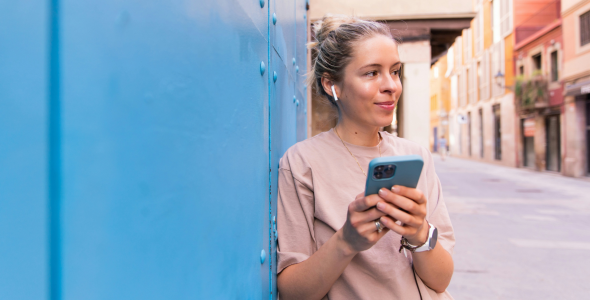User-centred design: 6 popular UCD methods
User centred design (UCD) puts a digital product's user at the heart of the design and development approach. Here we look at six user centred design methods that help drive better customer and business outcomes.
What is user centred design?
User centred design is an approach to digital product design and development that puts real users at the forefront of product processes. It involves speaking directly to the user at key points in the project to ensure it delivers on their needs and requirements.
These stages are carried out in an iterative fashion, with the cycle being repeated until the project's usability objectives have been attained.
This makes it critical that the participants in these methods accurately reflect the profile of your actual users.
ISO 13407 outlines four essential activities in a user centred design project:
- Requirements gathering: understanding and specifying the context of use
- Requirements specification: specifying the user and organisational requirements
- Design: producing designs and prototypes
- Evaluation: carrying out user-based assessment of the site
The table below details some of the most popular user centred design methods and what they tend to look like.
| Method | Cost | Output | Sample size | When to use |
|---|---|---|---|---|
| Focus groups | Low | Non-statistical | Low | Requirements gathering |
| Usability testing | High | Statistical and non-statistical | Low | Design and evaluation |
| Card sorting | High | Statistical | High | Design |
| Participatory design | Low | Non-statistical | Low | Design |
| Questionnaires | Low | Statistical | High | Requirements gathering and evaluation |
| Interviews | High | Non-statistical | Low | Requirements gathering and evaluation |
User centred design examples
Focus groups
A focus group involves encouraging an invited group of intended or actual users of a site or digital service (i.e. participants) to share their thoughts, feelings, attitudes, and ideas on a certain subject.
Organising focus groups within an organisation can also be very useful in getting buy-in to a project from within that company.
When to use focus groups
Focus groups are most often used as an input to design. They generally produce non-statistical data and are a good means of getting information about a domain (e.g. what people's tasks involve).
Focus group considerations
It's necessary to have an experienced moderator and analyst for a focus group to be effective.
Usability testing
Usability testing sessions evaluate a site by collecting data from people as they use it. A person is invited to attend a session in which they'll be asked to perform a series of tasks while a moderator takes note of any difficulties they encounter.
Users can be asked to follow the think-aloud protocol which asks them to verbalise what they're doing and why they're doing it.
You can also time users to see how long it takes them to complete tasks, which is a good measure of efficiency (although you should bear in mind that using the 'think aloud' protocol will slow users down considerably).
Two specialists' time is normally required per session – one to moderate, one to note problems.
When to use usability testing
Usability testing can be used as an input to design or at the end of a project. It's an excellent way to uncover key usability and digital accessibility issues with a site or digital prototype.
Usability testing can be used to generate non-statistical or statistical data.
Usability testing considerations
Usability testing requires some form of design to be available to test, even if it's only on paper.
Testing works best if it focuses either on gathering non-statistical feedback on a design through 'talk aloud' or statistical measures.
Card sorting
Card sorting is a method for suggesting intuitive structures/categories. A participant is presented with an unsorted pack of index cards. Each card has a statement written on it that relates to a page of the site.
The participant is asked to sort these cards into groups and then to name these groups. The results of multiple individual sorts are then combined and analysed statistically.
When to use card sorting
Card sorting is usually used as an input to design. It's an excellent way of suggesting good categories for a site's content and deriving its website information architecture.
Card sorting can be used generate statistical data.
Card sorting considerations
Providing participants with a trial run on some easy cards (e.g. sports, animals, etc.) can reassure about what they are expected to do and result in a more productive session.
Participatory design
Participatory design does not just ask users for their opinions on design issues, but actively involves them in the design and decision-making processes.
When to use participatory design
Participatory design is usually used within a mini-project to generate prototypes that feed into an overall project's design process.
An example would be a participatory design workshop in which developers, designers, and users work together to design an initial prototype. This initial digital prototyping would then feed into a more traditional design process.
Projects that use participatory design alone are very rare. It's typically used alongside other user centred design methods.
Participatory design considerations
Participatory design sessions can be very fluid and require an experienced moderator with thorough knowledge of the domain to guide users.
Questionnaires
A questionnaire or quantitative survey is a type of user research that asks users for their responses to a pre-defined set of questions and are a good way of generating statistical data.
When to use questionnaires
Questionnaires are usually employed when a design team:
- Can only gain remote access to users of a site
- Is seeking a larger sample size than can be achieved through direct contact
That's why questionnaires are usually sent through the post or through digital channels like email.
Questionnaire considerations
Questionnaires allow statistical analysis of results. This data can increase a study's credibility, but it's important that the survey is well designed and asks non-biased questions.
Interviews
An interview usually involves one interviewer speaking to one participant at a time.
The advantages of an interview are that a participant's unique point of view can be explored in detail. It is also the case that any misunderstandings between the interviewer and the participant are likely to be quickly identified and addressed.
The output of an interview is almost exclusively non-statistical. It's critical that reports of interviews are carefully analysed by experienced practitioners.
When to use interviews
Interviews are usually employed early in the design process in order to gain a more detailed understanding of a domain/area of activity or specific requirements.
Interview considerations
Interviewing places a high premium on the experience and skill of the interviewer and analyst.
Accelerate your UCD journey
This has been an introduction to the major user centred design methods. While each method has value, it's crucial to use them in the right way – for the right reasons, and at the right time. And what 'right' looks like will differ from project to project.
If you enjoyed this guide, do check out these related articles:
- A guide to recruitment for research
- Tips and best practices for your quantitative survey
- Your user testing FAQ
We support diverse organisations with user research, usability testing, and all aspects of digital product design. Chat with our consultants today to prime your project for success and secure better outcomes for you and your customers.





